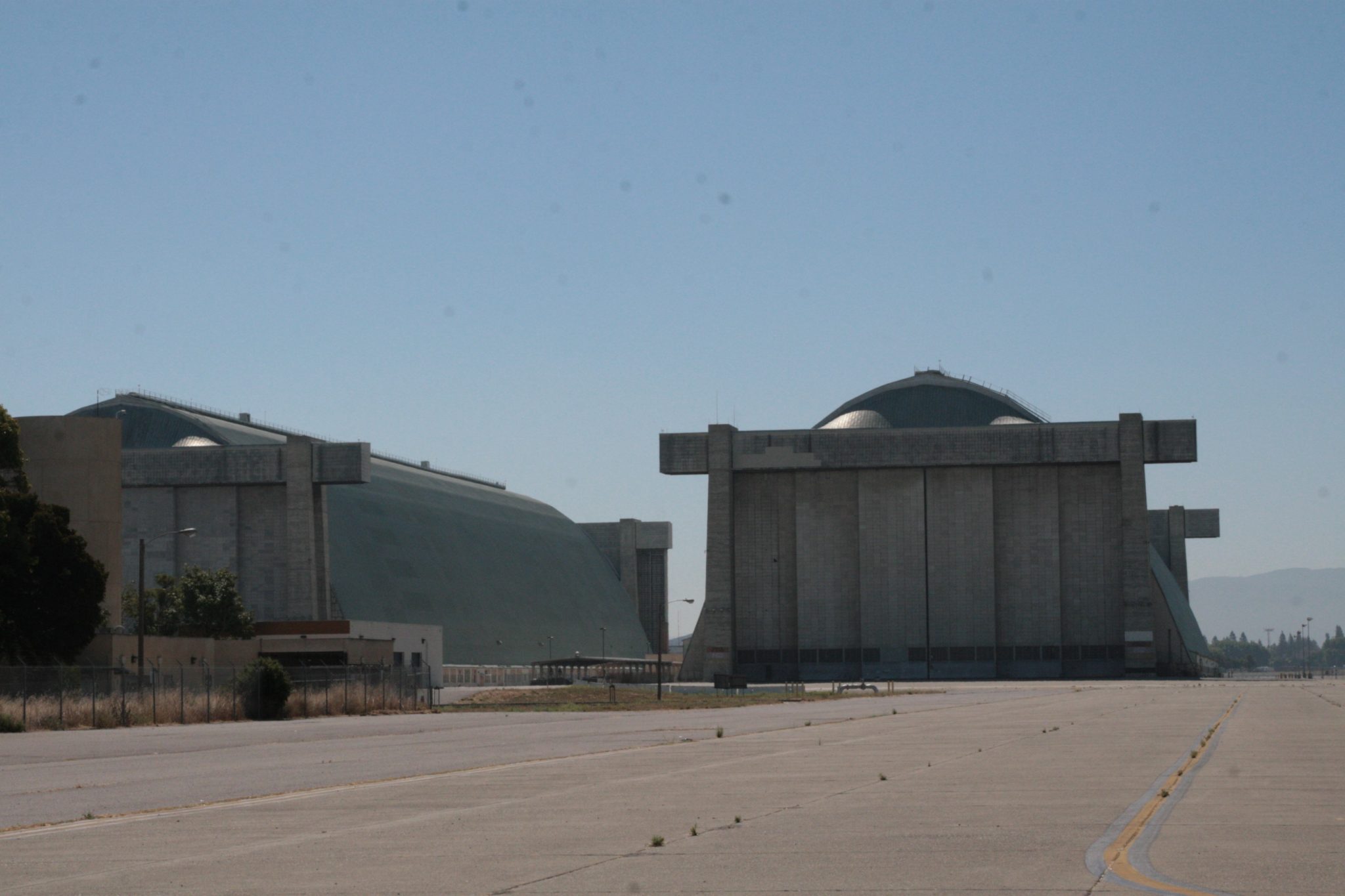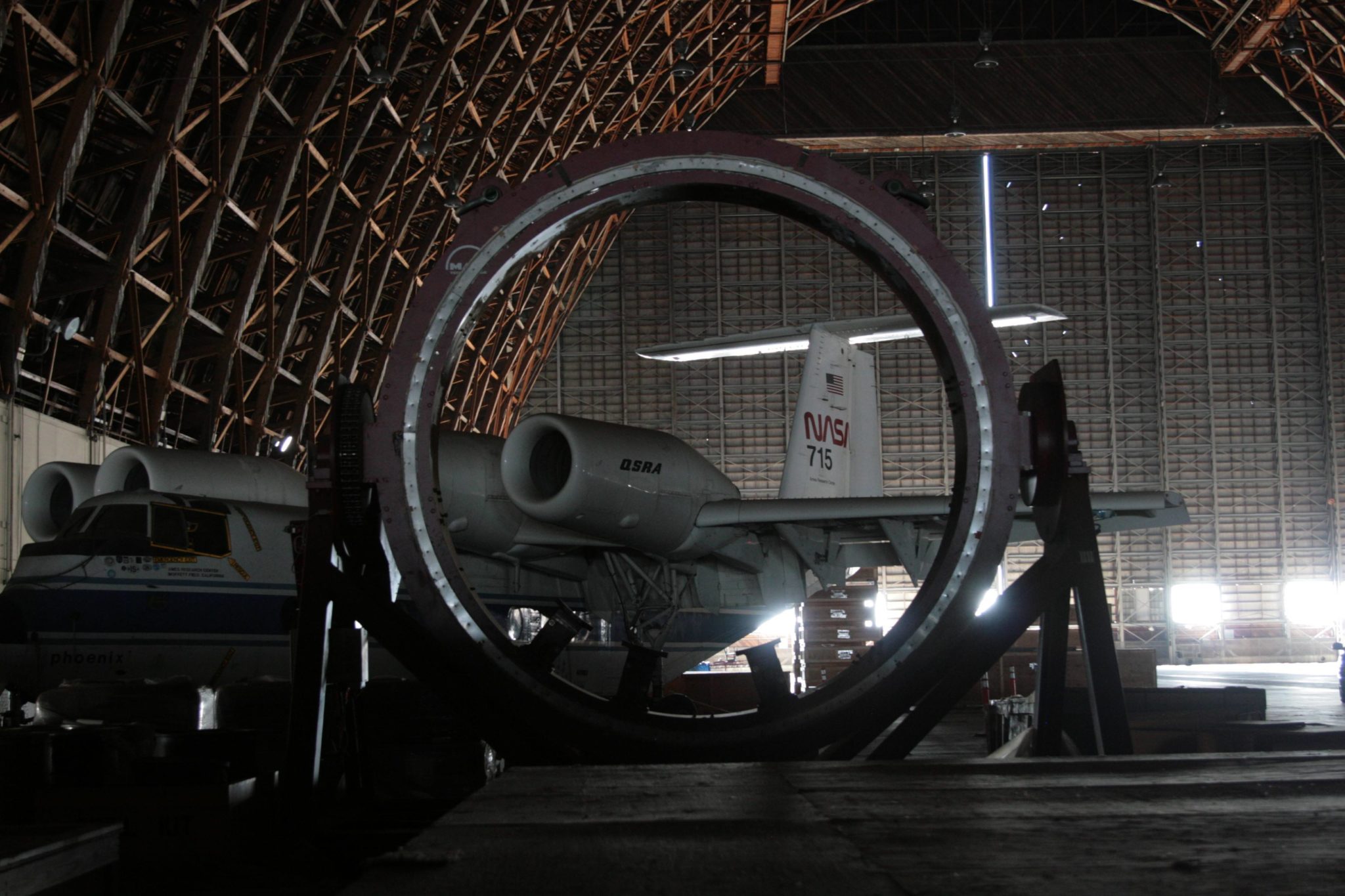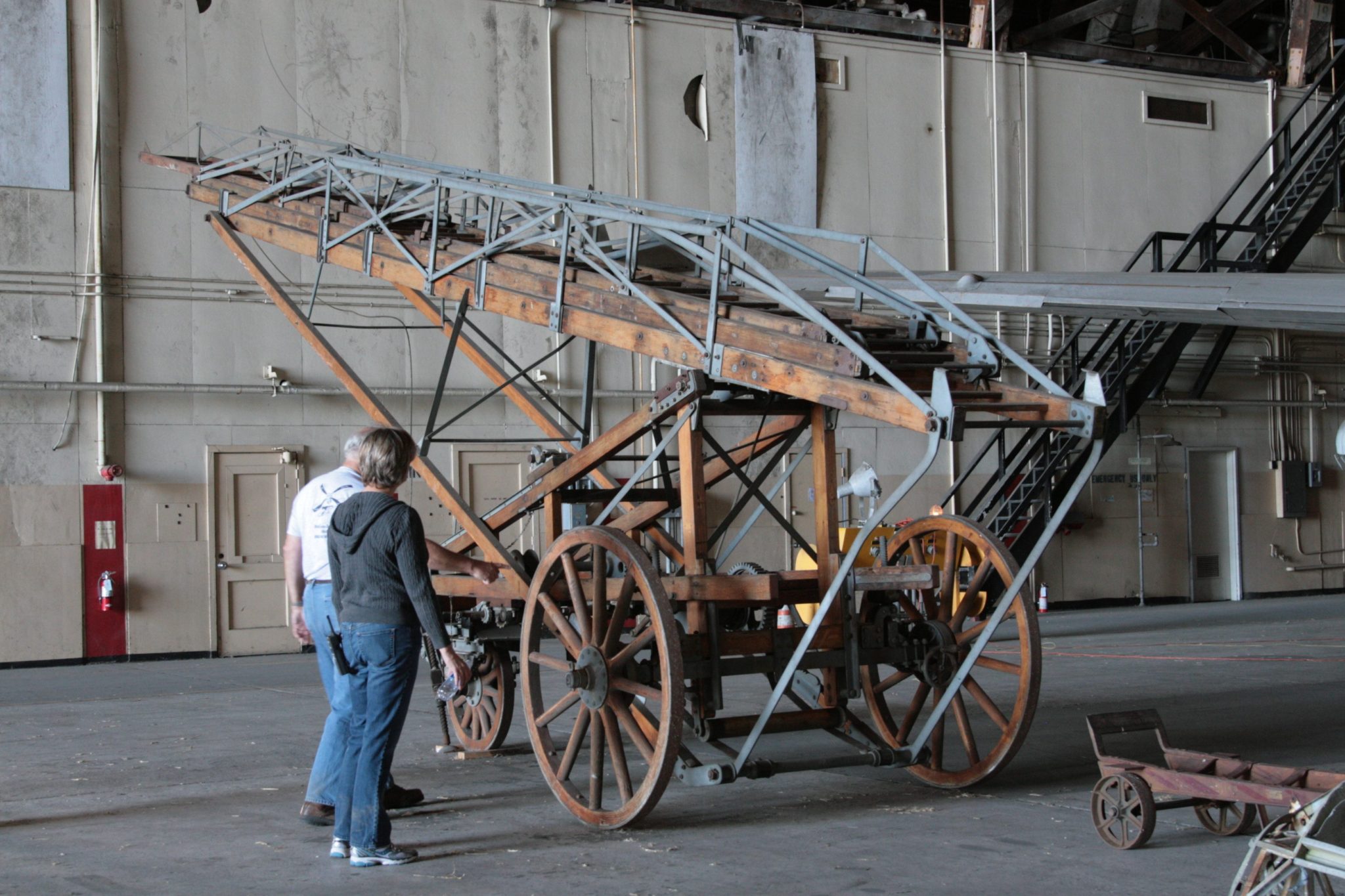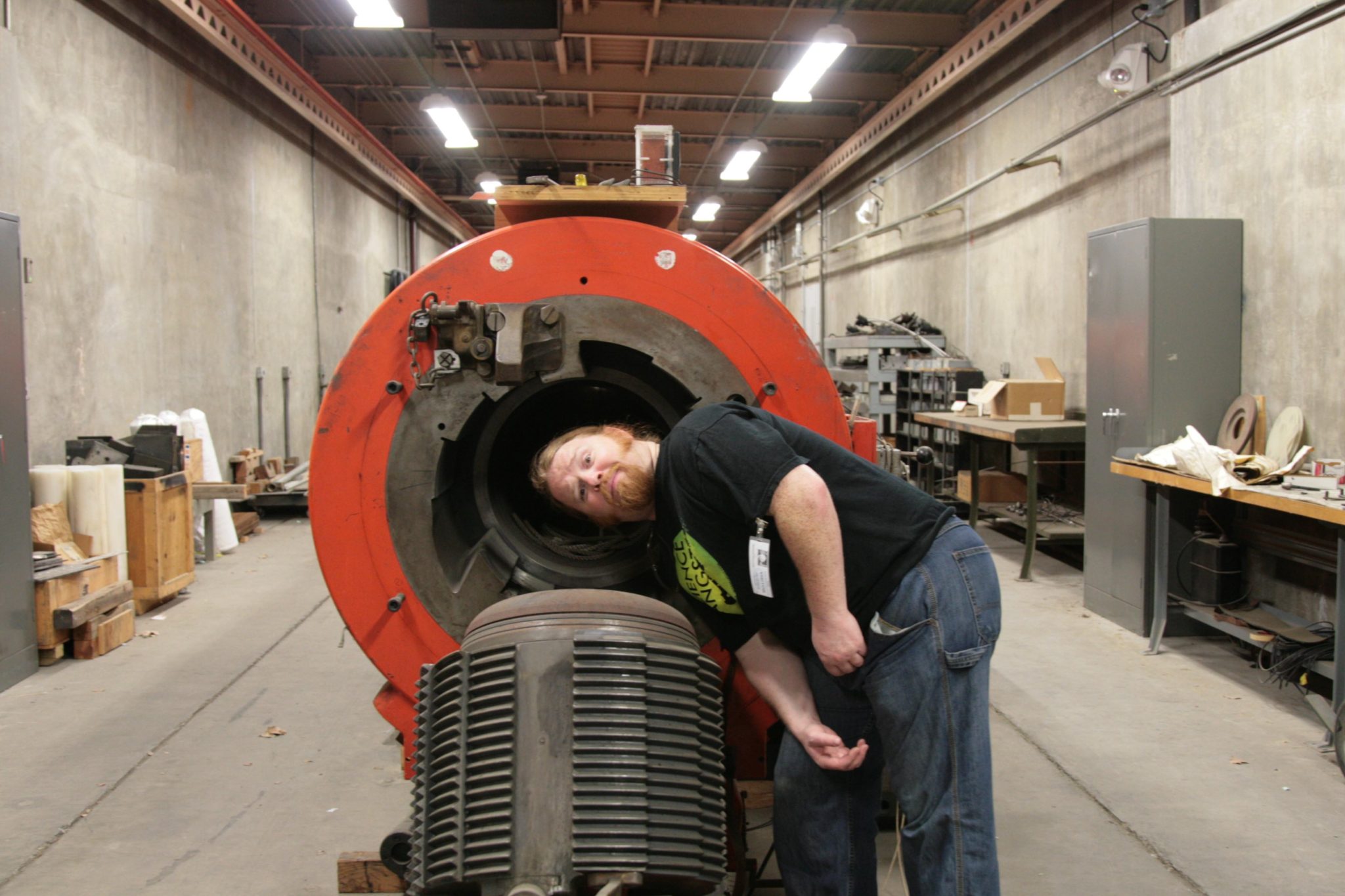Let me start with this, zeppelin hangars are very large.
 They may look big from the freeway but you need to enter the cavernous space to get the full enormity; only the Vehicle Assembly Building at Kennedy Space Center has been comparable. They were also built around the same time as the last proper zeppelins, which is to say prior to the Americans with Disabilities Act and OSHA. Plummeting to one’s death from the arch while working on an airship was definitely considered bad form, but hardly a thing one would call a stop work order for. It was a different time. Americans are now a soft people and I, as a personal representative of Americaness, am hardly fit enough to climb the concerning ladder/staircases of Moffett Field’s Hangar 2.
They may look big from the freeway but you need to enter the cavernous space to get the full enormity; only the Vehicle Assembly Building at Kennedy Space Center has been comparable. They were also built around the same time as the last proper zeppelins, which is to say prior to the Americans with Disabilities Act and OSHA. Plummeting to one’s death from the arch while working on an airship was definitely considered bad form, but hardly a thing one would call a stop work order for. It was a different time. Americans are now a soft people and I, as a personal representative of Americaness, am hardly fit enough to climb the concerning ladder/staircases of Moffett Field’s Hangar 2.
This trip all began back in May when John, a machinist at Ames, asked if I’d be interested in a tour of the hangars if he could wrangle one. I said hell yes and asked if my friend Erik could join us. I got told to hold my horses and to wait and see if he could make the excursion even happen first. Sadly, Erik died the week after John made the tentative offer and it took four months to wrangle a trip outsiders could go on. This most definitely was a trip Erik would have enjoyed. It was dirty, it was normally inaccessible, and it was full of Science and History.
First off, Hangar 2:
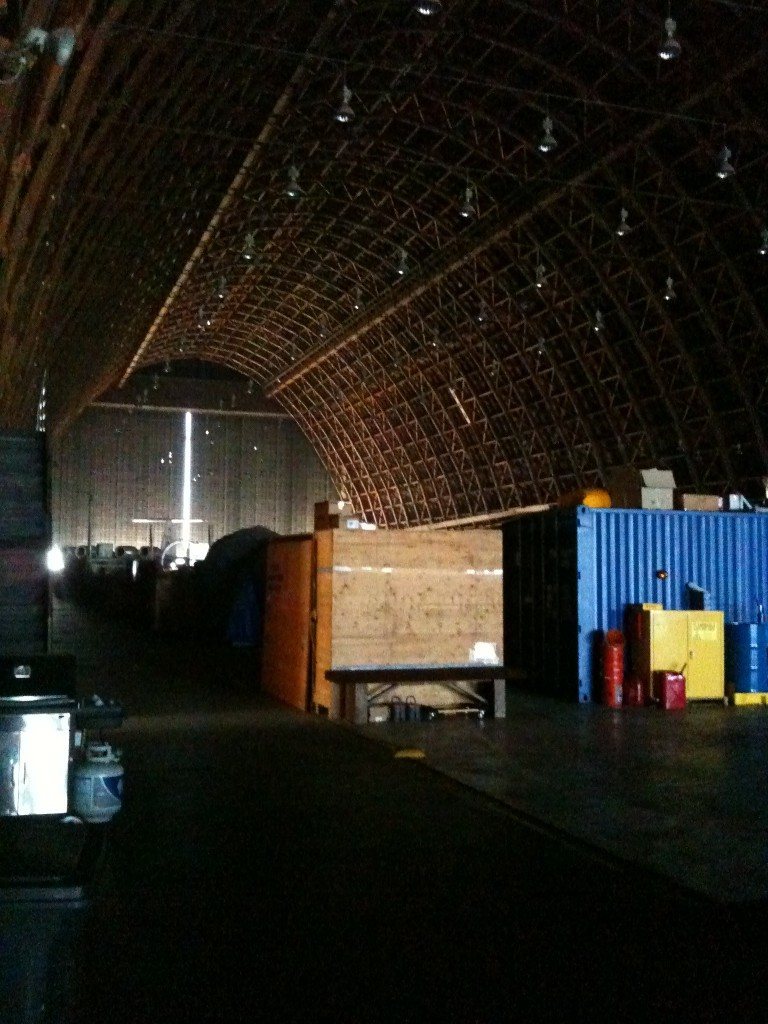
The smallest of the three hangars and occasional former home of the ZR-3 Los Angeles. It is where Airship Ventures, AKA the ad blimps you see cruising the Bay Area, are based. Additionally, this is where the experimental helium turbine that went up over Haiti for emergency generation and comms after the earthquake lives. And that all is in just the rearmost tenth of the hangar in this shot (PUBLIC SERVICE ANNOUNCEMENT: NASA would be quite happy to lease space for joint ventures). The rest is mostly littered with the detritus of 30 years of projects that seem to come to a resting place here. For example, this was a mirror mount for a telescope, not a Stargate prototype:
With no small amount of effort, I scaled the hairy with dry rot wooden structure of the hangar with John and our representative from flight ops. My Lovely Assistant declared the ground to be quite good for her and no way was she going up. I did not die, though a heart attack seemed possible, even likely, from time to time while making the long ascent. It was more comfortable than the gangsta lean ascent I experience scaling the staircase of the dome on St. Peter’s in Rome however. Sadly, by the time I got to the top I was too tired and it was too dark up there to take any pictures competently and the blurry shot below was the best I managed. My legs were wobbling for the rest of the day after getting back down.
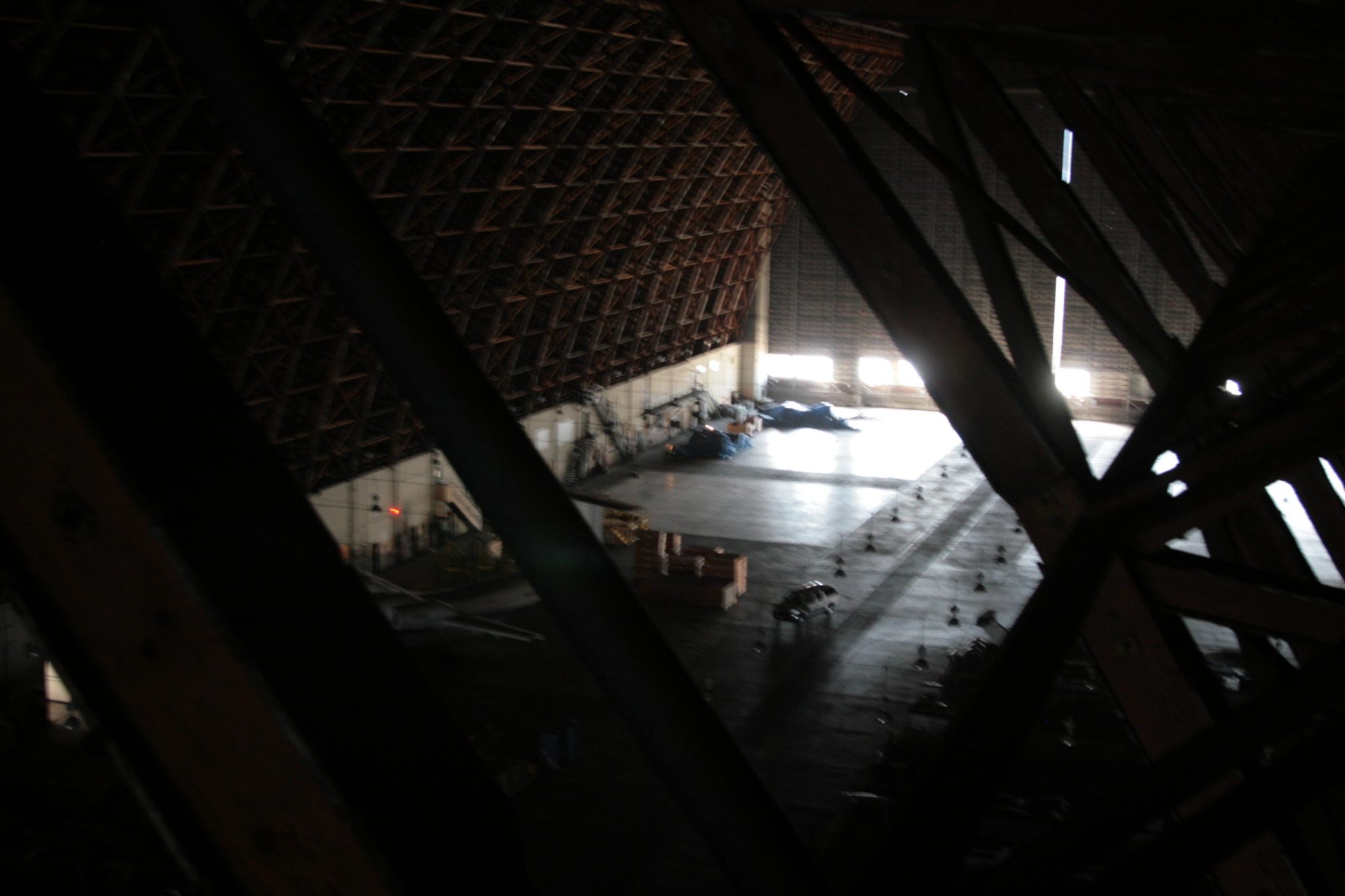 Hangar 3 is a fair bit wider than Hangar 2, possibly intended as a home for ZRS-4 Akron if it ever showed up at the same time as ZRS-5 Macon. Currently, it’s floor is split about 50/50 between Space Systems Loral satellite projects and NASA/Navy airframe restoration, mainly for museum pieces. I’d had enough climbing, so we contented ourselves with exploring the antiquities. These two, a piece of the Los Angeles‘ airframe and the gas envelope sleeve removal man’s extension ladder were of particular interest:
Hangar 3 is a fair bit wider than Hangar 2, possibly intended as a home for ZRS-4 Akron if it ever showed up at the same time as ZRS-5 Macon. Currently, it’s floor is split about 50/50 between Space Systems Loral satellite projects and NASA/Navy airframe restoration, mainly for museum pieces. I’d had enough climbing, so we contented ourselves with exploring the antiquities. These two, a piece of the Los Angeles‘ airframe and the gas envelope sleeve removal man’s extension ladder were of particular interest:
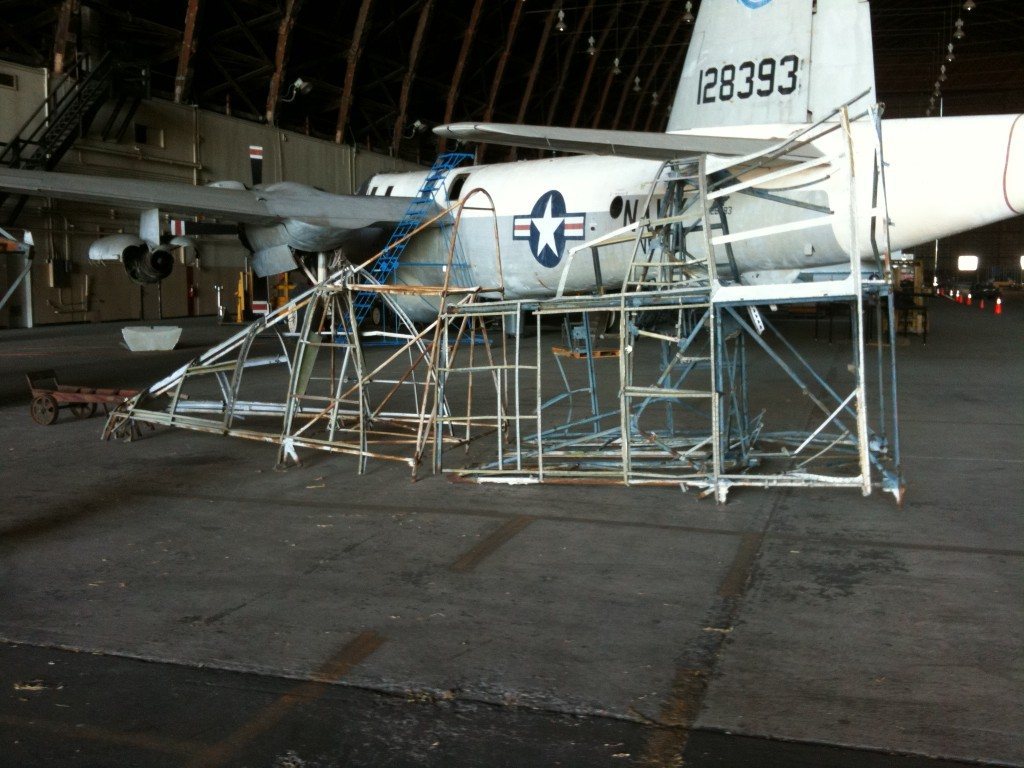
Hangar 1 was built to house the Macon but barely saw use before the airship crashed off of Big Sur in 1935. Sadly, this building will be gone soon as it gets reduced to a whalebone skeleton for decontamination and hazardous materials disposal. The skin of the building is lead painted asbestos tiles that are cemented together with PCBs. If only we could find a way to make it radioactive too so that it would be a maximally difficult to dispose of as toxic waste. It’s sad because the building is quite beautiful with corrugated glass windows (!), but environmental concerns trump historical site registry for this one. The Navy claims they will treat the skeleton to preserve it so that a new skin could be built if anyone were interested, but good luck to that I say. A new skin needs to be installed as the old is removed if things are to be properly preserved.
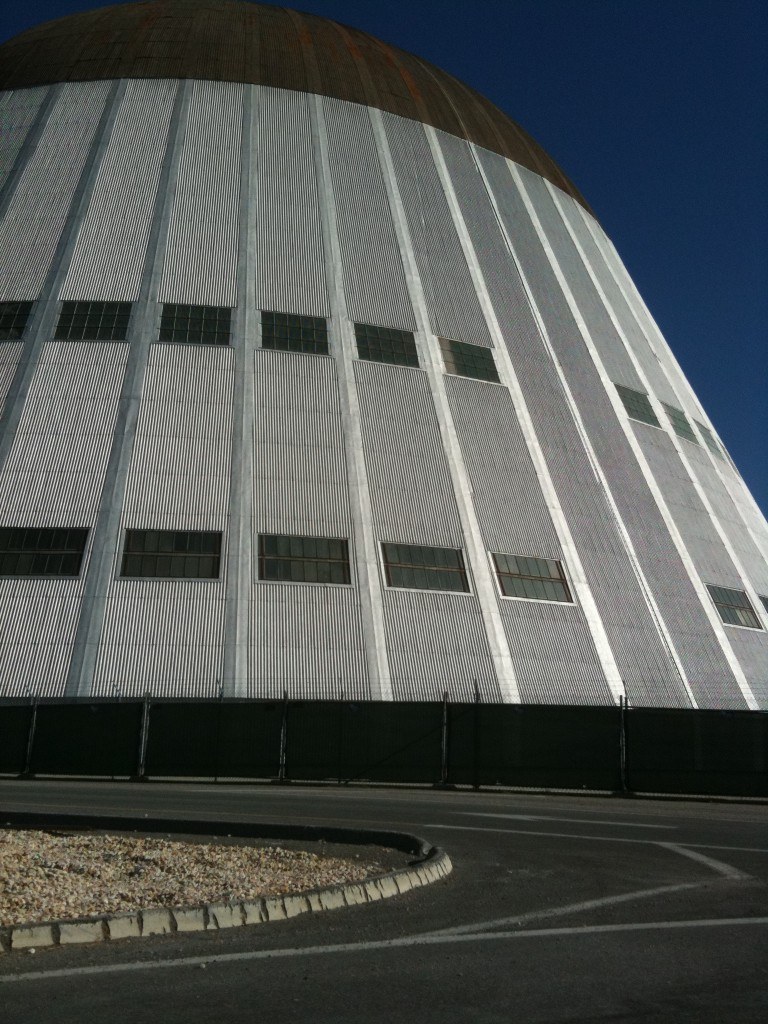
Moving on. Here’s me with my head in the breach of the Supergun:
This is a 16″ gun that’s been reamed out to 17″ and then sleeved in a larger barrel is part of the High Pressure Test Facility. Here they fire small scale models from what are, seriously, modified WWII battleship deck guns re-tasked for SCIENCE! down a Schlieren photography rig at a very, very thick target at Mach Lots. I got taken for the tour of all the armor plate patches and cement repairs from where models went off axis and went spang. The thumb sized Apollo capsule went through 2″ of steel and 2′ of reinforced concrete when there was a little bit of a whoopsie. How do I know this is a WWII battleship deck gun you ask? Well, how about this:
- 16″ Mark 6 Model 1, 1942
This means I have now seen two out of the three of the Superguns. I’m going to need a Q clearance again if I want to see JASPER, however.
I also got to go wandering around inside of the Unitary Wind Tunnel but none of those pictures came out.
In summation, it is sad to see many Big Science facilities barely used due to lack of funding and interest. Of everywhere I went, the Supergun sees the most business. All the other facilities I visited seem to be largely used as storage for files and equipment from “When We Did Stuff”. Oh, I’m told the computational areas see a great deal of action but eventually you have to make a model into reality and we don’t seem to be doing that much anymore.
As Warren Ellis says, DO SOMETHING.
